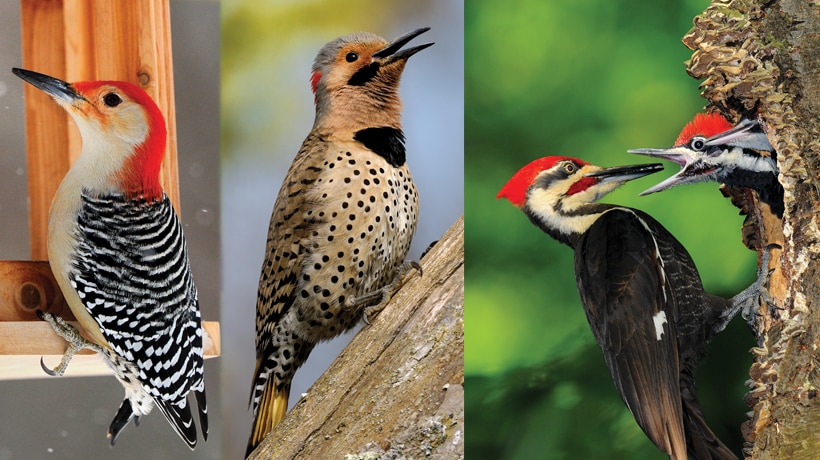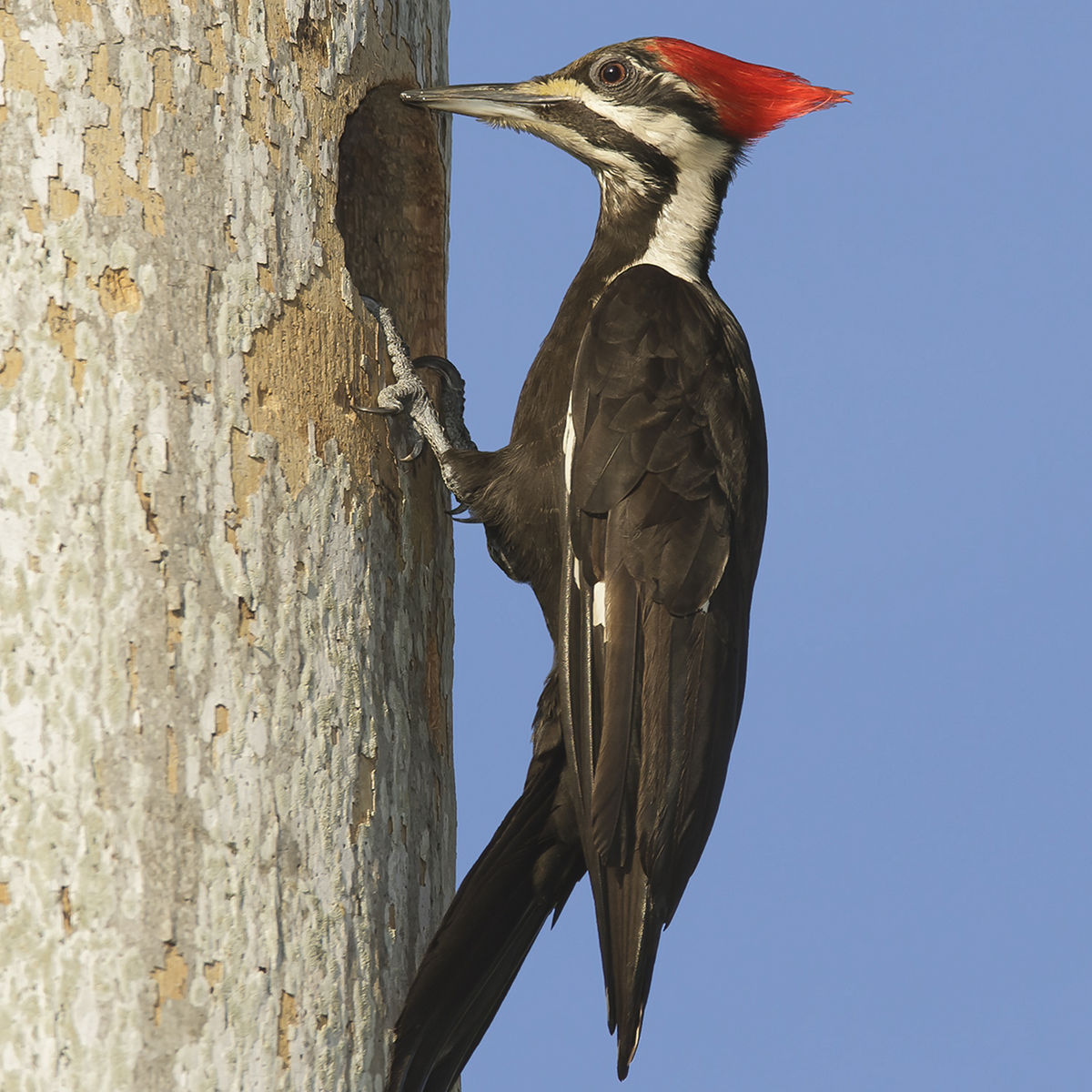Recognizing Woodpeckers in Florida: Behavior, Types, and Habitats
Recognizing Woodpeckers in Florida: Behavior, Types, and Habitats
Blog Article
Woodpeckers Unleashed: Discovering the Wonders of These Skilled Tree Climbers
Woodpeckers, with their unique markings and rhythmic drumming echoing via wooded areas, hold an one-of-a-kind place in the bird globe - Woodpeckers in Florida. As we dive into the complex details of woodpeckers' nesting routines, feeding strategies, and the ongoing preservation initiatives to safeguard these impressive birds, a deeper gratitude for their area in nature unfolds.
Composition and Adaptations
When checking out the anatomy and adjustments of woodpeckers, one can observe remarkable features that make it possible for these birds to thrive in their specialized ecological particular niche. In addition, woodpeckers have zygodactyl feet, with 2 toes encountering ahead and two facing backward, providing a company grasp on tree trunks while they browse for food or drum for communication.
Additionally, woodpeckers have a distinct tongue structure that is long, barbed, and sticky, enabling them to remove bugs from gaps in wood. This customized adjustment enables woodpeckers to make use of a food source that is inaccessible to several various other bird species. Overall, the makeup and adaptations of woodpeckers showcase the impressive evolutionary solutions that have actually enabled these birds to thrive in their arboreal environment.
Drumming Habits
Having checked out the anatomy and adjustments of woodpeckers, the focus currently moves to understanding their drumming actions, a distinctive facet of their communication and territorial displays. Drumming is a crucial form of interaction among woodpeckers, offering multiple objectives such as establishing regions, attracting mates, and signaling alarm. Each woodpecker types has a distinct drumming pattern that assists individuals identify participants of their very own varieties and identify them from rivals or killers.
Woodpeckers generate drumming noises by quickly pecking on powerful surface areas such as dead trees, utility posts, or even metal items, creating a collection of rhythmic beats. The strength and speed of drumming can vary based on the function; for circumstances, a rapid drumming series may represent aggressiveness towards intruders, while a slower and softer drumming pattern might show courtship (Woodpeckers in Florida). Furthermore, woodpeckers may readjust the frequency and period of their drumming to share particular messages successfully
Nesting Habits
Checking out the nesting routines of woodpeckers exposes fascinating insights into their reproductive actions and habitat options. Woodpeckers are understood for their distinct nesting preferences, commonly digging deep into cavities in trees to develop protected spaces for raising their young. These tooth cavities serve not only as a nesting website however additionally as a safe and secure refuge from predators and harsh weather condition.
Woodpeckers exhibit a high level of integrity to their nesting sites, often going back to the very same area time after time. This habits highlights the value of ideal environment schedule for their reproductive success. The choice of a nesting website is vital for woodpeckers, with variables such as tree varieties, elevation, and decay go now stage playing significant roles in their decision-making process.
Surprisingly, some woodpecker varieties are recognized to dig my explanation deep into several tooth cavities within their territory, providing themselves with alternative nesting alternatives. This approach might work as a type of insurance policy versus prospective threats or disturbances to their key nesting website.

Feeding Methods
Woodpeckers use a variety of specialized feeding strategies to procure their primary food resources. Among the most distinctive feeding habits of woodpeckers is drumming, which entails rapid pecking on trees to discover bugs under the bark. This drumming not only assists them situate target but likewise acts as a method of interaction with various other woodpeckers. Woodpeckers have strong, chisel-like beaks that allow them to drill right into timber easily. As soon as a hole is created, they use their long, barbed tongues to draw out pests such as ants, beetles, larvae, and crawlers. These tongues are covered with sticky saliva that helps trap the prey. Woodpeckers are likewise understood to dig deep into dental caries in trees to accessibility hidden insect larvae or sap. Some species, like the acorn woodpecker, store nuts in specially created holes called granaries. This calculated keeping of food assists them endure throughout food deficiency durations. Woodpeckers are absolutely amazing in their feeding strategies, showcasing versatility and intelligence in acquiring their nourishment.
Conservation Efforts
Amidst the detailed feeding strategies displayed by woodpeckers, the conservation efforts focused on guarding these interesting birds play a critical duty in maintaining their environments and populations. Woodpeckers face numerous dangers to their survival, including habitat loss as a result of deforestation, climate adjustment altering their communities, and collisions with synthetic structures such as structures and automobiles - Woodpeckers in Florida. Guardians are proactively functioning to address these obstacles and make sure the long-term health of woodpecker species

Education and public recognition projects are likewise vital parts of woodpecker preservation efforts. By elevating recognition regarding the importance of these birds in keeping healthy and balanced forest ecosystems, preservationists can gather assistance for habitat preservation efforts and promote liable land administration practices. Via collective initiatives between researchers, policymakers, and regional communities, we can interact to safeguard a future where woodpeckers flourish in their all-natural habitats.
Verdict

Report this page